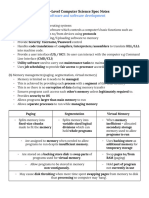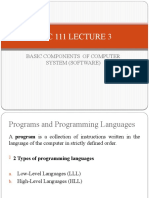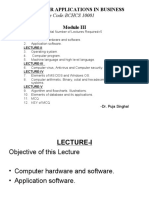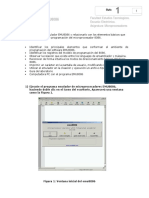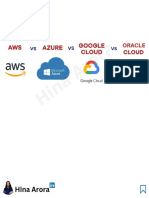0% found this document useful (0 votes)
54 views7 pagesComputer Science Software Notes For IGCSE 0478
The document provides an overview of software types, including system and application software, and details the functions of operating systems such as memory management, security management, and user management. It also covers programming languages, differentiating between high-level and low-level languages, and explains the role of translators and Integrated Development Environments (IDEs) in software development. Additionally, it discusses interrupts and their handling in computing systems.
Uploaded by
mohd.ashaz21Copyright
© © All Rights Reserved
We take content rights seriously. If you suspect this is your content, claim it here.
Available Formats
Download as PDF, TXT or read online on Scribd
0% found this document useful (0 votes)
54 views7 pagesComputer Science Software Notes For IGCSE 0478
The document provides an overview of software types, including system and application software, and details the functions of operating systems such as memory management, security management, and user management. It also covers programming languages, differentiating between high-level and low-level languages, and explains the role of translators and Integrated Development Environments (IDEs) in software development. Additionally, it discusses interrupts and their handling in computing systems.
Uploaded by
mohd.ashaz21Copyright
© © All Rights Reserved
We take content rights seriously. If you suspect this is your content, claim it here.
Available Formats
Download as PDF, TXT or read online on Scribd
/ 7
































